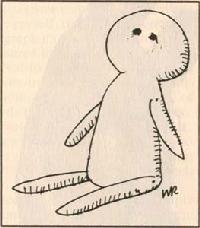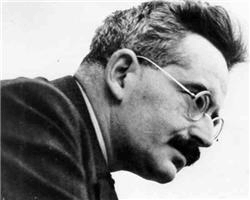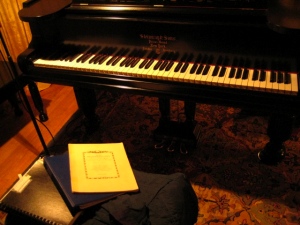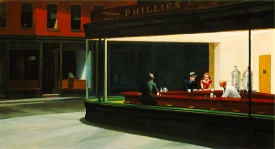
The locus of the conversation is the place/time where something new was revealed through a coming to terms by a group of people sitting around a table. The spatio-temporal coordinates of those tables have caused me to long for some method of time travel, a way to sit at those tables and engage in those conversations. Literature has provided me with a portal to some of those locations: the table of Gerald and Sara Murphy; the Algonquin roundtable; a late night at the carnegie deli; or in a car driving across the country with a lost battalion of platonic conversationalists.
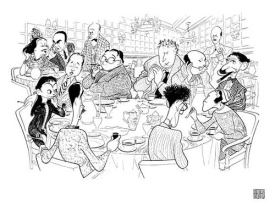
The Network has changed some of the essential requirements for a conversation. A place at the table is no longer necessary– only time remains as a primary home for conversation. It’s time that now calls the tune, conversation unfolds in sequence, through the river of time across multiple real time media streams.
Remember ‘that time.’ I don’t remember all the words, or how they were strung together into sentences– or even the order of the sentences. I remember I spoke first, or was it you? But I remember ‘that time,’ I remember the ride we took. I remember the big ideas we passed by– they really made an impression. They changed the way I think about things, and therefore changed my world.
Detached from place, the conversation unfolds in a virtual space. It’s the place we all call in to. Somehow, I imagine that space without light- only sound echoing in the darkness. Without visual cues, it’s a building up another kind of give and take. It’s almost impossible for me to anticipate when you are about to speak. But after we’ve talked in that darkness a few times, we develop a sense for the music of it. The rhythms, the melodies and themes provide the pocket of the groove for the next solo to blend into.
An augmentation of the conversation occurs for the speakers when the darkness lifts and they open their eyes and view the live Network. Place returns, and it’s the Network’s space that we have in common. The visual space of the virtual conversation is an undiscovered country. We use that space to verify facts, to remember names, find support in statistics, and point to a location for later reference. As we speak, we browse and co-browse, we hunt and gather fuel for the conversation.
What of the fuel? What ignites a conversation and keeps it going? From what source does it draw its energy? There’s a point at which you can stand and watch as the future comes into being. It comes, not out of nothingness, but rather from the re-combining and re-describing of the things around us. The moment when you stop watching silently and begin to bring language into the frame, you start to understand the real usefulness of the new. The new wants explaining, it seeks language.

Sometimes it seems as though we’re talking in circles, never getting closer to the center of the matter. But conversations are never perfect circles, they’re always spirals. Or perhaps a circle in the sense of a hermeneutic circle:
The hermeneutic circle describes the process of understanding a text hermeneutically. It refers to the idea that one’s understanding of the text as a whole is established by reference to the individual parts and one’s understanding of each individual part by reference to the whole. Neither the whole text nor any individual part can be understood without reference to one another, and hence, it is a circle. However, this circular character of interpretation does not make it impossible to interpret a text, rather, it stresses that the meaning of text must be found within its cultural, historical, and literary context.
Our dialogues and monologues have entered a kind of floating world, detached from physical space and reattached to place within the Network. While the shape of the conversation is much the same, it is augmented by an extended access to memory. When I refer to my notes, they are infinitely deep. The danger is that we may end up simply reading to each other and lose our voice in favor of a chorus of quotation. It’s only when we color outside the lines that we uncover the new. For a truly exploratory dialogue failure isn’t an option, it’s a requirement.
2 Comments